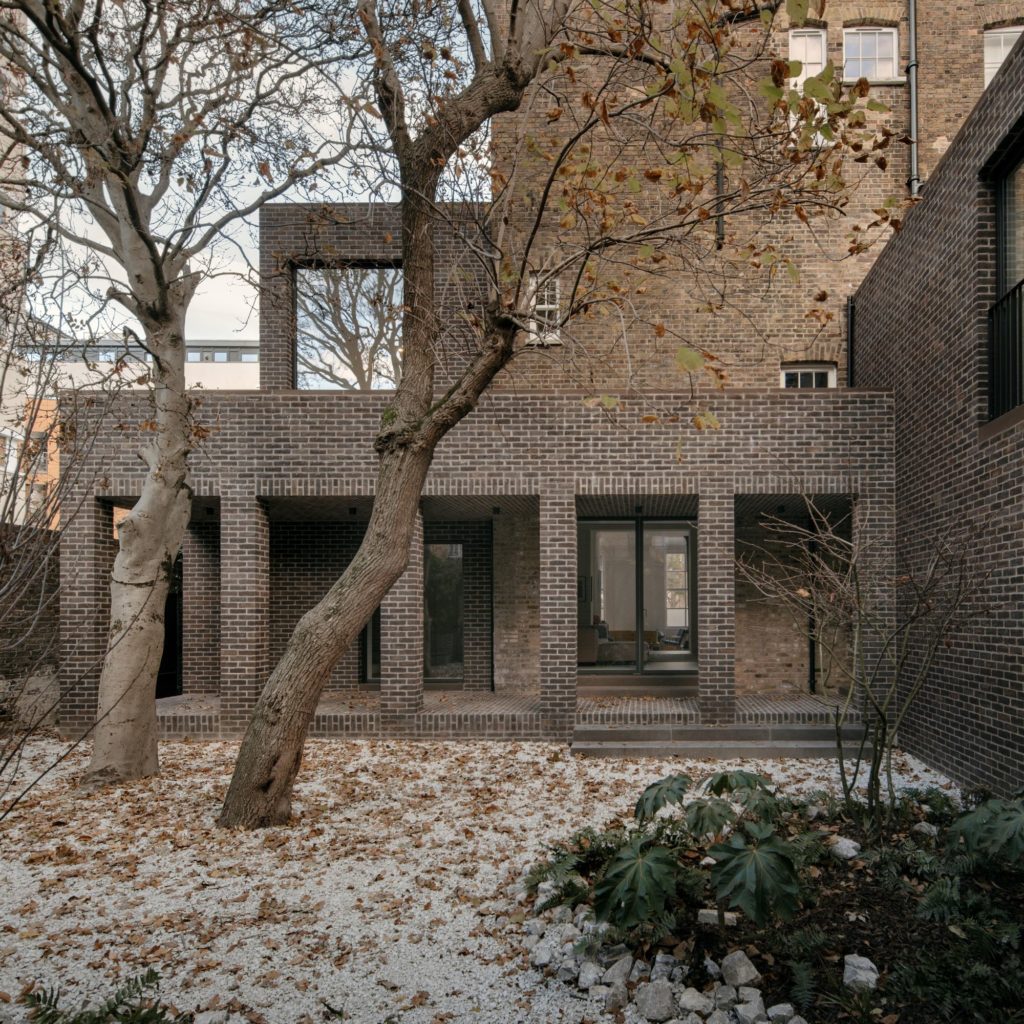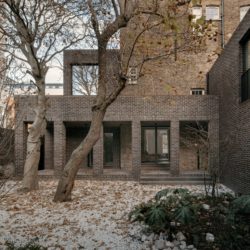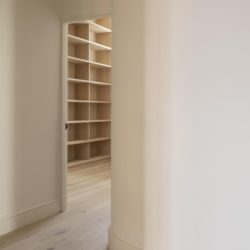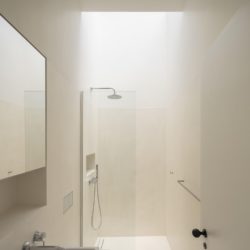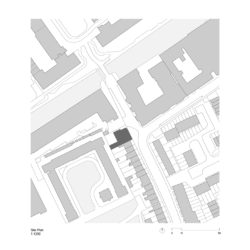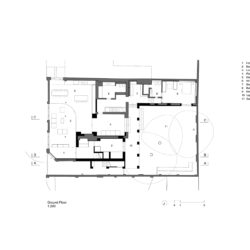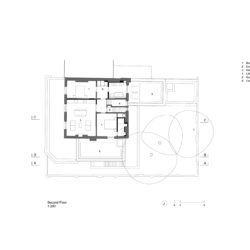Erbar Mattes Architects . + AJ
Prompted by the family expanding, the residents of the ground floor acquired the vacant first floor and approached Erbar Mattes Architects to enlarge their property into a five-bedroom duplex. One of the main challenges consisted in creating a larger dwelling, while retaining separate access to the independent apartment on the top floor.
To overcome this the external circulation is relocated to the side elevation and a new raised walkway added to the rear. The resulting arrangement creates a new visual and physical connection to the courtyard and a unique arrival experience to the apartment. The loggia with its solid brick piers draws inspiration from monastic architecture, where cloisters form a sheltered transition space between inside and outside.
The architectural concept responds to the sensitive historic context and planning regulations of the surrounding area. Most of the original fabric is retained, with demolition mostly limited to incongruous extensions that detract from the legibility of the listed building.
Constructed in handmade grey-brown bricks and matching coping stones to complement the weathered 19th century masonry, the new rectilinear building volumes wrap around the side and rear elevations without detracting from the ornate front façade.
Window cills, copings and external stair are constructed in pigmented precast concrete, reinforcing the monolithic quality of the building. The masonry is constructed with traditional flush struck hydraulic lime mortar. A bespoke mortar mix using brown and black pigments was specifically developed for this project in collaboration with local suppliers.
Internally, the brief was adapted to the opportunities offered by the inherent qualities of the historic building. The former first floor function room with high ceilings and original timber panelling, window reveals and fireplaces is restored and re-purposed to create a generous master bedroom with direct access to a roof terrace. A natural oak joinery element partitions the space, forming a dressing area.
The former first-floor kitchen is transformed into a large family bathroom and a wider section of corridor converted into a study. Modern plasterboard ceilings are removed to regain the original ceiling heights. Redundant spaces are fitted with inbuilt joinery, helping to declutter the house and create clearly defined rooms.
A new internal staircase with a large window overlooking the trees as well as further bedrooms and bathrooms are located in the new side and rear volumes.
Bronze ironmongery and oak floors bring a level of refinement to the otherwise simple and functional interior aesthetic. Rather than following a traditional Victorian colour palette, original timber panelling elements are abstracted in white to form a serene and timeless environment. The bathrooms are finished with a polished waterproof plaster forming a seamless surface and illuminated by skylights and internal windows.
The scheme implements a low energy design as far as reasonably possible within the constraints of the listed fabric. High levels of thermal insulation and air tightness are provided wherever feasible. Biodiverse green roofs to the extensions help regulate the buildings internal temperature.
During the course of the works, Erbar Mattes Architects was further commissioned to convert the interiors of the self-contained second floor apartment. All modern interior elements were removed and the original lath and plaster partitions, ceilings, doors, and fireplaces retained. The kitchen was relocated to face the front and new partitions added to form a generous two-bedroom dwelling.
_

